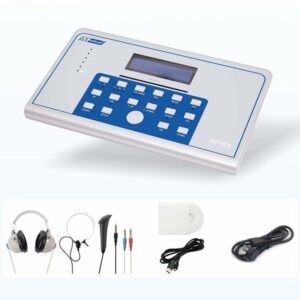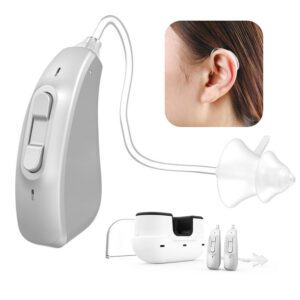hearing Loss is a condition that affects millions of people worldwide, and it can have a profound impact on daily life. Among the various types of hearing loss, sensorineural hearing loss (SNHL) is the most common. Understanding what SNHL is, how it affects your hearing and balance, and what treatments are available can help those affected manage the condition effectively.

What is Sensorineural Hearing Loss?
Sensorineural hearing loss occurs when there is damage to the inner ear (cochlea) or to the auditory nerve pathways that carry sound signals to the brain. Unlike conductive hearing loss, which is caused by problems in the outer or middle ear, SNHL affects the sensory and neural components of hearing.
Common causes of SNHL include aging, prolonged exposure to loud noises, genetic factors, certain illnesses, and some medications. The damage is often permanent because the delicate hair cells in the cochlea do not regenerate naturally. Symptoms typically include difficulty understanding speech, muffled hearing, or trouble hearing high-pitched sounds.

Does Sensorineural Hearing Loss Affect Balance?
The inner ear plays a crucial role not only in hearing but also in maintaining balance. Within the inner ear, the cochlea handles sound, while the vestibular system helps control balance and spatial orientation. Because these systems are closely connected, damage to the inner ear can sometimes affect balance.
Individuals with SNHL may notice symptoms such as dizziness, unsteadiness, or even episodes of vertigo. Studies have shown that approximately 31% of patients with sudden sensorineural hearing loss (SSNHL) experience vertigo or imbalance. Additionally, research indicates that vertigo may lower the chance of recovery from SSNHL, with recovery rates being significantly higher in patients without vertigo.
Can Sensorineural Hearing Loss Be Reversed?
Currently, sensorineural hearing loss is largely irreversible, particularly in cases caused by age-related degeneration or permanent damage to the inner ear hair cells. Temporary SNHL caused by sudden loud noise exposure or infections may improve with prompt treatment, but permanent damage remains a challenge.
Researchers are exploring innovative treatments such as stem cell therapy, gene therapy, and cochlear implants. While these approaches show promise, they are still under development and not widely available. Early detection and intervention, however, can help prevent further damage and improve hearing outcomes.

Can hearing Aids Help Sensorineural Hearing Loss?
Although SNHL cannot be fully reversed, hearing Aids are an effective solution to improve hearing and quality of life. Hearing aids amplify sounds, making it easier to understand speech and engage in conversations, especially in noisy environments.
Modern hearing aids can be customized to the severity and frequency range of an individual’s hearing loss. In more severe cases, cochlear implants or assistive listening devices may be recommended. Audiologists work closely with patients to ensure proper fitting and programming for optimal results.
Living with Sensorineural Hearing Loss
Managing SNHL goes beyond using hearing devices. Practical strategies include protecting your ears from further noise exposure, learning communication techniques such as lip-reading or using visual cues, and maintaining a healthy lifestyle to support overall ear health.
Emotional and social aspects are also important. People with hearing loss may experience frustration or social isolation, so connecting with support groups, audiologists, or online communities can provide guidance and encouragement.
Conclusion
Sensorineural hearing loss is a permanent type of hearing impairment caused by damage to the inner ear or auditory nerve. While it can sometimes affect balance and cannot typically be reversed, solutions like hearing aids, cochlear implants, and lifestyle adjustments can greatly improve hearing and quality of life. Early detection and professional care are essential for managing SNHL effectively, helping individuals stay connected to the sounds that matter most.


